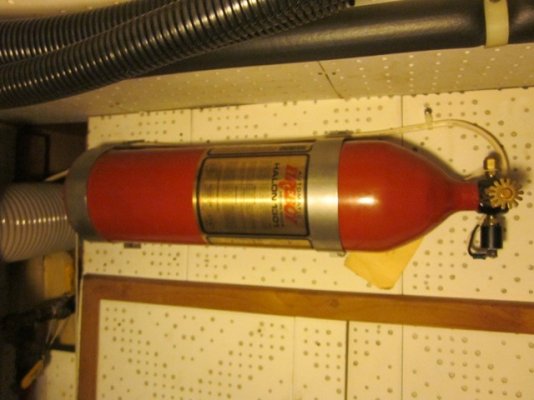Tom.B
Moderator Emeritus
- Joined
- Jul 30, 2009
- Messages
- 5,839
- Location
- USA
- Vessel Name
- Skinny Dippin'
- Vessel Make
- Navigator 4200 Classic
A LIFELONG boating cousin of mine has recently had a brush with death (literally) when his haylon fire extinguisher went off due to a failure. It has me questioning my own haylon engine room fire supression system and I would like to discuss options.
The Fireboy we have now is quite old (OEM I think from 1986). Accoring to Fireboy, as long as the weight is within spec noted on the label, it is still good, however, my local extinguisher shop cannot (or will not) service or tag it. Buying new IS an option, but considering the dreadful accident my cousin had, I really don't want haylon onboard anymore.
What are my options?
The Fireboy we have now is quite old (OEM I think from 1986). Accoring to Fireboy, as long as the weight is within spec noted on the label, it is still good, however, my local extinguisher shop cannot (or will not) service or tag it. Buying new IS an option, but considering the dreadful accident my cousin had, I really don't want haylon onboard anymore.
What are my options?


